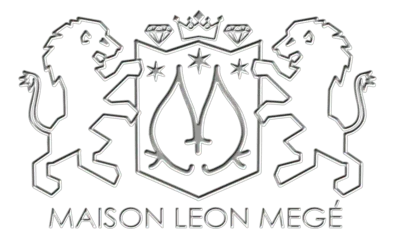A simulant will save a fortune , but not a face
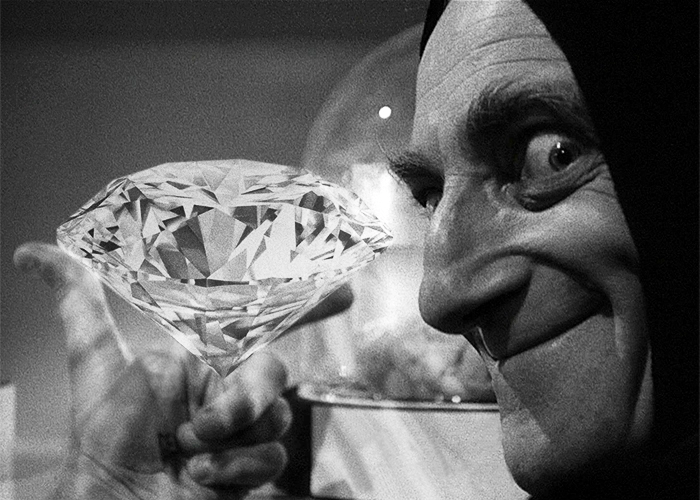
Diamonds are the stone of choice for engagement rings because they are colorless and durable. They can be worn daily without getting chipped, scratched, or dull (if kept clean). The same reason why engagement rings are usually made with white metal -platinum or white gold. A colorless ring is easy to color-coordinate and can be worn year-round with any outfit and for any occasion, formal or casual. Because of that, there are only a few options to replace a diamond in an engagement ring.
Simulants vs. Substitutes
Simulants or imitation diamonds, faux diamonds, fake diamonds, etc., are synthetic gemstones resembling diamonds such as Moissanite and CZs. Unlike lab-grown diamonds, simulants have vastly different chemical compositions and physical and optical properties. Simulants were used to trick people in the past, but they are now simply stand-ins for natural diamonds. With lab-grown diamond prices dropping fast, their value practically evaporated.
Diamond substitutes are natural gemstones – Spinels, Topazes, Sapphires, and Zircons that look different and cannot be mistaken for diamonds. Their use in engagement rings is a personal choice.
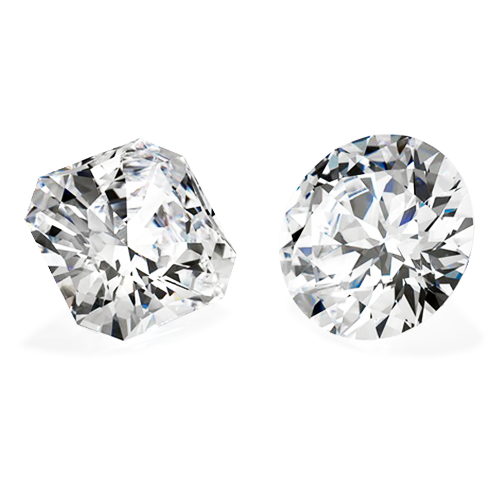
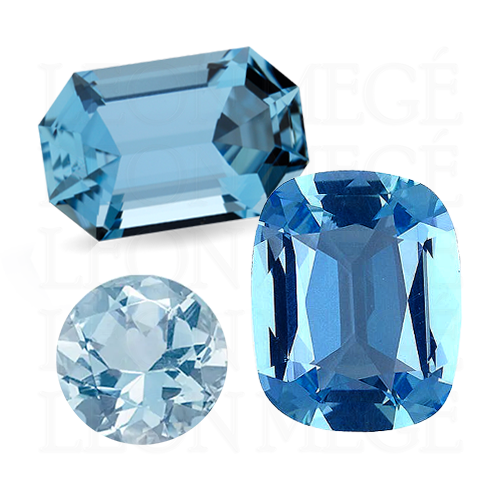
Aquamarine
Aquamarine’s color is typically lighter than a sapphire’s deep blue but warmer than a spinel’s cold and steely tone. Its color is very calming and subdued, similar to the tone of a fancy blue diamond. Aquamarine is a moderately priced, widely available, well-known gemstone associated with a good marriage.
Aquamarine’s cool blue color is neutral, radiating a sense of calm and relaxation. That’s why Facebook, Linkedin, and Twitter all have blue logos. Aquamarine is a variety of beryl with exceptional luster and clarity and is high on the list of diamond alternatives. It has a rich history predating the Roman Empire, highly prized for thousands of years.
Spinel
Spinel is a natural gemstone in various colors ranging from red, orange, pink, purple, and lavender to black. Light-blue or light-grey spinels are popular in engagement rings due to their excellent hardness and magnificent fire. Its girdle can be left exposed without worrying about getting chipped. Spinel works well in three-stone engagement rings and solitaires. Precious red spinels have long been mistaken for rubies. Recently spinel was added as August’s second birthstone.
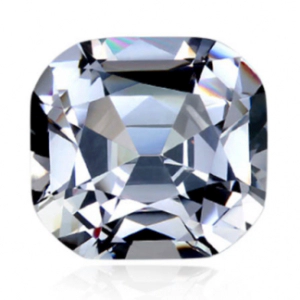
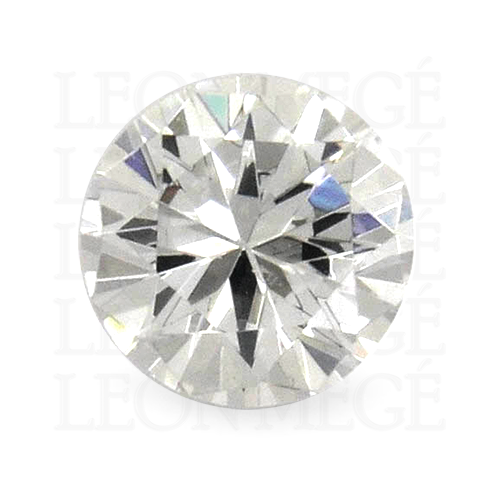
Zircon
Zircon was the most common diamond impersonator. Zircon is relatively hard (7.5 on Mohs scale) and has exceptional fire due to its strong dispersion. Naturally tinted yellow-brown zircons look exactly like low-color Brazilian diamonds common until South African diamonds were discovered. Colorless zircon is known for its brilliance and flashes of multicolored light called fire.
Topaz is durable, has a lot of fire and brilliance, and is inexpensive. It looks equally good as a brilliant cut – such as round, oval, cushion, or step-cut emerald. Topaz comes in various natural colors, such as light gray, baby blue, light brown, taupe, or pale yellow. The colorless topazes are nuked to induce the familiar bright-blue color. The irradiation results in a permanent color and leaves no radioactive residue. A deep pink or red variety called Precious or Imperial topaz is costly.
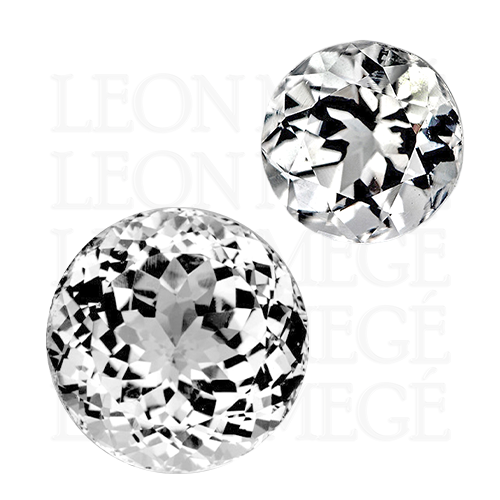

Leucosapphire
Trace elements cause corundum to turn blue, yellow, green, orange, pink, purple, and red we call ruby.
Depending on color saturation and origin, sapphires can be extremely expensive. Most people are familiar with blue sapphires, but they also can be colorless, which is the least expensive variety. Few colorless sapphires are left as-is; they are typically heated to produce a more desirable blue color.
Colorless sapphires have a dull, glassy look because corundum is not good at bending light or breaking it into spectral colors because of low dispersion. A colorless sapphire’s luster is inferior to the pure adamantine luster of a diamond. It appears blurry, washed out, and cannot be confused with a diamond.
Colorless sapphire is a poor choice when compared to other gemstones, either natural or synthetic. Light blue sapphires, on the other hand, are very affordable and attractive stones.
Moissanite
Moissanite is an extremely hard mineral – silicon carbide naturally occurring in meteorites. Moissanite has 9.25 hardness on the Mohs hardness scale – by far the hardest mineral except for a diamond. It has minimal cleavage, so it will not chip easily and is very safe to use and wear. It was named Moissanite after Nobel prize winner Henry Moissan who first identified it as a new mineral. Charles & Colvard produced greenish-yellow material until their patent expired in 2016. Asian manufacturers quickly figured out how to make pure white material and flooded the market with inexpensive moissanite better suitable for jewelry. All of it is produced in China. Because moissanite has strong double refraction (pleochroism), it contrasts with diamond accents.
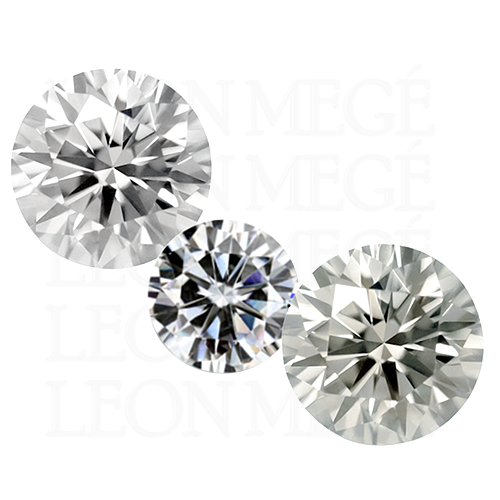
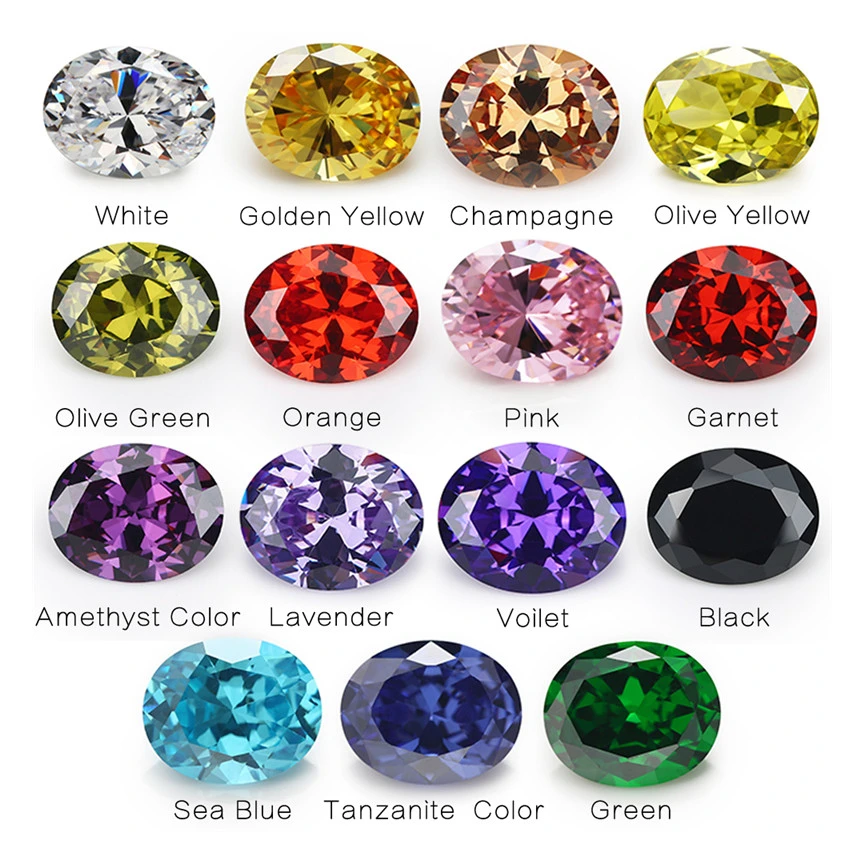
Cubic Zirconia, or CZ, is a hard (8.5 on the Mohs scale), single-refractive mineral. Unlike Moissanite, it does not have pleochroism – the dreaded doubling effect. In 1937 German mineralogists found naturally occurring grains of cubic zirconia, and in the 70s, Soviet scientists working on laser weapon systems accidentally synthesized it. They named the new mineral Fianit an acronym for the Physical Institute of the Russian Academy of Science (FIAN). Asian producers seized the opportunity, and soon cheap generic material flooded the markets. Early production was often contaminated with undissolved flux remnants, causing the stones to turn yellow with time. Modern stones will not become yellow or cloudy.
CZs’ high dispersion is responsible for a significant amount of “fire” – a rainbow-like color separation of the light exiting the stone. Because of it, a CZ has more fire than a diamond. But CZs’ lower refractive index results in a substandard brilliance with less contrast resembling a diamond with a strong fluorescence.
However, since step-cuts have less brilliance and sparkle, an emerald- or an Asscher-cut CZ looks very diamond-like. CZs’ tell-tale brightness that makes it unnaturally white can be masked with a thin layer of tinted coating, similar to the coating on a pair of sunglasses. This coat is not stable and scratches off easily.
CZs go by a multitude of names born of creative marketing. “Diamonique,” used by the QVC shopping network, is an example of such deceptive branding. Others, such as Diamond Nexus Labs, Russian Brilliants, Carat.cc, Sona Diamond, Signity Diamonnique, Lannite, Fianit, Van Graff, Zironite, Amora, and many more are vying for a market share with unsubstantiated claims that their material is different.
